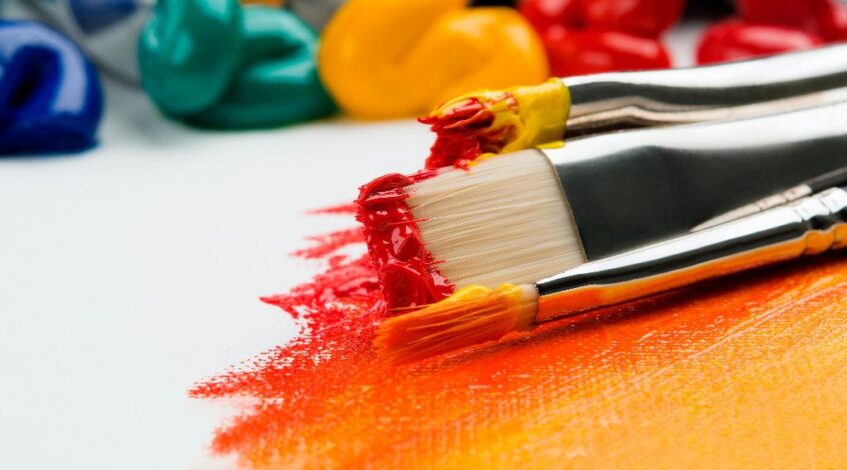The power of technology has changed the way art is created, consumed, and sold. Now, imagine if legendary artists like Van Gogh, Da Vinci, or Picasso were alive today. How might they leverage modern e-commerce tools, particularly PayPal, to sell their masterpieces in our digital world?
The Digital Art Gallery
Historically, artists relied on patrons, physical galleries, and exhibitions to showcase and sell their works. Fast forward to today, and virtual art galleries and online platforms have democratized access to art. With just a click, art enthusiasts can view and purchase artworks from anywhere in the world. A contemporary Van Gogh might have his Starry Night viewed in real-time by someone in Tokyo, New York, and Rio simultaneously.
Why PayPal?
In the complex web of online transactions, trust is paramount. This is where PayPal shines and why it could have been the chosen platform for our hypothetical digitally-active artists.
The Rise of PayPal in Online Transactions
Amid the multitude of online payment options, why has PayPal emerged as a favored choice, especially in industries like online casinos? The success of PayPal in online casinos, especially in regions such as New Zealand, is notable. Primarily, its reputation for security makes it a trusted choice. Users appreciate the stringent encryption technology that ensures every transaction’s safety. Furthermore, the ease and speed of transactions, combined with its user-centric approach, make it a top pick. For more insights into PayPal dominance in online casinos click here. Considering these attributes, it’s evident why legendary artists might choose PayPal. Secure, swift, and straightforward transactions would mean they could focus on their art, leaving the commerce aspect to be efficiently handled by the platform.
A Global Patron Base
With PayPal, artists wouldn’t be restricted to local buyers or the elite class. Their art could be accessible to global audiences, each transaction being as simple as transferring funds with a few clicks. A painting made in a quaint studio in Spain could find a home in a modern apartment in Singapore.
Diversifying Art with Digital Tools
If legendary artists had the digital tools we possess today at their disposal, the art realm might look remarkably different. Imagine Da Vinci creating interactive art installations, or Picasso offering virtual art classes. With PayPal, not only could they sell their works effortlessly, but they could also diversify their offerings, monetizing virtual experiences and art courses.
Expanding Beyond Traditional Canvas
The digital age brings with it myriad tools that redefine the boundaries of art. Digital art software, 3D printing, augmented reality – the possibilities are endless. An artist like Monet, renowned for capturing light’s fleeting qualities, might have experimented with dynamic digital canvases that shift with the day’s time, altering colors in real-time. And with platforms like PayPal, monetizing such innovative art forms becomes seamless.

Art Collaborations Across Continents
The world is more connected than ever, and artists aren’t confined to their immediate surroundings. Imagine if Frida Kahlo and Van Gogh, separated by time and space, could collaborate on a piece. With digital platforms and PayPal’s secure payment system, artists could easily collaborate, sharing funds and costs, regardless of their physical locations. Their combined works, sold on an international platform, could be purchased by an enthusiast in a completely different continent, making art truly global.
Bridging Past and Present
While it’s intriguing to envision historical artists leveraging modern tools, many contemporary artists draw inspiration from past masters. By utilizing digital tools and platforms like PayPal, they can effectively bridge the gap between classical techniques and modern sensibilities. Think of it as a digital Renaissance, where the charm of the old world meets the conveniences of the new.
Empowering Emerging Artists
PayPal and similar platforms don’t just benefit the legends; they play a crucial role in empowering emerging artists. With lower transaction fees and a trusted global reputation, newer artists can confidently put their work out in the virtual world, without the need for traditional gallery representation. The playing field is leveled, and art’s true value is spotlighted. No longer are artists at the mercy of middlemen. They can control pricing, engage directly with buyers, and get real-time feedback.
Nurturing the Next Picasso or Da Vinci
Every era has its prodigies, and our digital age is no different. With tools like PayPal facilitating easy transactions, younger artists can focus on honing their craft rather than being bogged down by commerce’s intricacies. Today’s emerging artist, selling their art online, might just be tomorrow’s legend, remembered and revered for centuries to come.
The Art of Future: Unbounded
As we muse about great artists selling in the virtual world, the fusion of art and technology becomes even more compelling. They wouldn’t just be selling paintings but could delve into digital art forms, augmented reality exhibitions, or even collaborate on virtual reality experiences.
Conclusion
In conclusion, the merger of art and technology, symbolized by our imaginary scenario of legendary artists using PayPal, underscores the limitless potential of our digital age. Artists, whether from the past, present, or future, can reach wider audiences, ensuring their masterpieces are both seen and easily acquired by enthusiasts worldwide.

